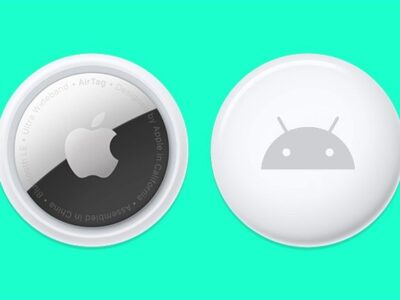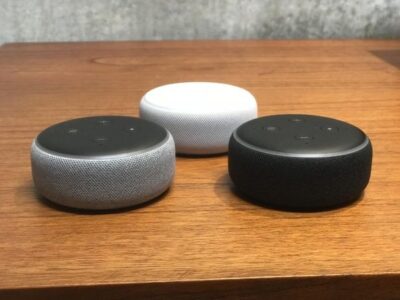
Learning How to read and use an electricity meter can be an effective tool in managing your power use. It gives you the information you need to make adjustments to your consumption and potentially lower your bill. Here in this article, we introduce you to how to read your electricity meter.
Local utility companies are good sources if you wish to know more information about reading your meter. If you want to have monthly information, the utility bills could have all the information you need. Just be sure the bills are based on actual, not estimated, meter readings, and be aware of when the meter was read, because the time period between readings can vary.
-
BN-LINK WiFi Heavy Duty Smart Plug Outlet, No Hub Required with Timer FunctionBest overall
-
Upgraded Brighter LCD Display Night Vision Power Meter PlugBest expensive
-
Smart Home Energy Monitor | Vue – Real-Time Electricity Monitor/MeterBest price
-
Wemo Bridge with Insight Smart Plug with Energy Monitoring
-
P3 International P4460 Kill A Watt EZ Electricity Usage Monitor, grey
-
Sense Energy Monitor – Track Electricity Usage in Real Time and Save Money
-
kuman KW47-US Electricity Usage Monitor Plug Power Watt Voltage Amps Meter with Digital LCD
-
Eyedro Home Energy Monitor | Solar Energy & Net Metering
Electricity is billed in kilowatt-hours. A kilowatt-hour is 1000 watt hours which is equivalent to operating a hundred-watt lamp for 10 hours. To read your electric meter you should begin with a dial at the right and write down the number the pointer is directly on or is last past. Repeat this procedure on the remainder of the dials from right to left.
The newer generation of electricity meters uses digital displays instead of dials. The difference between monthly readings is the number of energy units that have been used for that billing period.
What is the function of an electricity meter?
Is the reading dials of your electricity meter baffling and you don’t know how your electricity meter works? You should first know the function of this electric stuff.
An electricity meter or energy meter is a device that measures the amount of electrical energy consumed by the building, tenant space, or electrical equipment.
Electric utilities use electric meters installed at customers’ premises to measure the electric energy delivered to their customers for billing purposes.
When your power meter has taken its customary perusing, these numbers are moved to your power provider.
In the past, you probably have had representatives from your power provider visit your home to take your power meter perusing directly from the dial. Presently, with current brilliant power meters, there’s no need for a provider specialist to physically come and take a perusing. All things considered, the perusing result is sent straightforwardly to your power provider, speeding up and working with the understanding system.
Digital power meters permit your provider to as need be get a precise perusing of your real power utilization and charge you.
What are the top 8 electricity meters?
Below you can find useful information about the top 8 electricity meters:
1. BN-LINK WiFi Heavy Duty Smart Plug Outlet, No Hub Required with Timer Function
[easyazon_image align=”none” height=”500″ identifier=”B07CVPKD8Z” locale=”US” src=”https://m.media-amazon.com/images/I/31nGa+7dtqS._SL500_.jpg” tag=”izood-20″ width=”500″]
[easyazon_infoblock align=”none” identifier=”B07CVPKD8Z” tag=”izood-20″]
BN-LINK WiFi Heavy Duty Smart Plug Outlet is a smart plug that probably shares internal components with a bunch of other similar plugs, but at the time of our testing, 2 of these are the same price as one of the other competing power monitors.
This electric stuff reads voltage and up to 15 amps of current directly, and the app lets you track the history usage in kilowatt-hours of whatever is plugged into it. This makes it easy to track the cost of running a specific appliance, like a portable air conditioner or heater.
Although we could plug more than one device into a “power strip” multi-outlet device, running more than 15 amps which are 1500-1800 watts depending on voltage, is not recommended with this type of power connector. A power strip with a surge protection circuit should be used to keep anything from overheating.
The BN-Link Ecosystem is based on the same Tuya cloud-based platform that dozens of other brands are using. This means you can add the BN-Link smart plugs to Tuya’s own “Smart Life” app and see all the same power monitor readouts.
Pros:
- Affordable
- Easy-to-use
- Switch and monitor a single appliance or power strip from anywhere in the world is possible
Cons:
- Could be hacked as it can connect to the internet
- Is not easy to install
2. Upgraded Brighter LCD Display Night Vision Power Meter Plug
[easyazon_image align=”none” height=”500″ identifier=”B07P8M7N9F” locale=”US” src=”https://m.media-amazon.com/images/I/41tEEQW9P+L._SL500_.jpg” tag=”izood-20″ width=”500″]
[easyazon_infoblock align=”none” identifier=”B07P8M7N9F” tag=”izood-20″]
This model brings about most of the expected power measurements and makes it easy to read them. This power meter is about as generic as they come, but the giant backlit screen and low price make it easy to recommend.
A Power Meter Plug allows users to plug in an appliance and then see the full range of real-time and cumulative power data such as Voltage and frequency from the power grid, minimum watts, Maximum watts, Elapsed time counter, Kilowatt-hour total, and total cost of power used.
The Fayleeko has an internal battery that saves your power consumption rate when it is unplugged. With this feature, you can zero the counter with a recessed button.
The feature that makes this meter stand out is the very large backlit screen, which made it easier to read in dark corners or at an awkward angle than other meters. The light turns off after about a minute, but it is easy to turn on again by pressing the up button when you need to check the reading.
Pros:
- nice screen upgrade
- good calibration
- affordable
- easy to use
Cons:
- Not good for heavy duties like inverter-driven equipment in a factory
3. Smart Home Energy Monitor | Vue – Real-Time Electricity Monitor/Meter
[easyazon_image align=”none” height=”500″ identifier=”B07R11H2Q2″ locale=”US” src=”https://m.media-amazon.com/images/I/412Q4KGWhpL._SL500_.jpg” tag=”izood-20″ width=”500″]
[easyazon_infoblock align=”none” identifier=”B07R11H2Q2″ tag=”izood-20″]
Vue lets you track circuits independently if you want to see power readings for every appliance in your house and not just one, the Emporia. This means that you can track your kitchen, laundry, heating, and entertainment appliances together without jumping between apps or manually checking stand-alone meters.
Instead of plugging appliances into a monitor, this system relies on a qualified person. This person could be you if you know about basic electrical-safety steps to install 8 clamp-style sensors on individual breaker wires. wiring up power to the control box is another step that should be taken. Once all installation is done, any current that flows through the circuits you have installed sensors on will be logged.
You can also add other Vue boxes to the same account for tracking eight additional circuits each (even on sub-panels).
The more-complex installation inside your breaker box means you can also monitor built-in appliances, like your oven or air conditioner, even if they are using 240-volt connections. You can even use the Vue with a solar power installation to compare how much power you are using and how much is generating.
Pros:
- you track 8 individual circuits with each sensor module simultaneously
- well-designed
- If you can change out a circuit breaker, you can probably install this yourself
Cons:
- cannot provide readings every second
4. Suraielec Watt Meter, Plug-in Socket Power Meter, Auto Cost Calculator
[easyazon_image align=”none” height=”500″ identifier=”B08GSPLZBN” locale=”US” src=”https://m.media-amazon.com/images/I/418NZJ2NBwL._SL500_.jpg” tag=”izood-20″ width=”500″]
[easyazon_infoblock align=”none” identifier=”B08GSPLZBN” tag=”izood-20″]
If you are looking to apply an internet-connected power monitor which is an Apple-compatible home automation product, the Wemo is one of the few options that allow you to monitor power usage and use Siri’s smart home features.
This model requires the use of an accessory hub to work with Apple’s Bluetooth-based Homekit system. This feature makes it an even bigger investment than the already-expensive plug itself. A newer version of these mini smart plugs (the smaller modules without monitoring) and controllers for switching or dimming lights will connect to your Apple automation system without an extra hub.
Pros:
- Well designed
- makes lighting control devices and simple power switches
- focuses on telling you how often the switch is turned on and how much that will cost you
Cons:
- Pricey
- number of amps a device is drawing is not available
5. P3 International P4460 Kill A Watt EZ Electricity Usage Monitor, grey
B000RGF29Q[easyazon_image align=”none” height=”500″ identifier=”B000RGF29Q” locale=”US” src=”https://m.media-amazon.com/images/I/41htdrTnnML._SL500_.jpg” tag=”izood-20″ width=”500″]
[easyazon_infoblock align=”none” identifier=”B000RGF29Q” tag=”izood-20″]
P3 International P4460 Kill A Watt EZ Electricity Usage Monitor can be picked after reading many appliance reviews in the last decade. There are really good results reported by the Kill-a-Watt – P4460 power meter during the last decade. This model is the most popular stand-alone power meter on the market, and if we had to pick the meter we trust most, it would be this one. Compared to our Klein Tools multimeter, it registered only a 0.49% error with a large resistive load, which is slightly higher than P3’s specification for typical accuracy, but well under their maximum tolerance of 2% at 0.2 amps.
Pros:
- Easy to use
- Affordable
- Battery-powered
Cons:
- Hard to read
6. Sense Energy Monitor – Track Electricity Usage in Real Time and Save Money
[easyazon_image align=”none” height=”500″ identifier=”B075K6PHJ9″ locale=”US” src=”https://m.media-amazon.com/images/I/41G8I9uoQXL._SL500_.jpg” tag=”izood-20″ width=”500″]
[easyazon_infoblock align=”none” identifier=”B075K6PHJ9″ tag=”izood-20″]
The Sense Energy Monitor is one of the best yet most affordable stuff that you can pick. Sense Energy Monitor makes our list for its sleek features.
The top-of-the-line technology is the most advantageous feature of Sense. The design is Intertek Certified so you know that you’re getting quality.
Sense keeps your home and those you love out of impending risk by cautioning you if irons, space warmers, or other possibly perilous machines were left on.
Using this monitor you can track your electricity usage in real-time. This model gives you data at your fingertips so that you can implement money-saving strategies. This system can be pretty effective when it is working, yet it takes a long time to detect anything.
Sense is compatible with all iOS and Android platforms. Sense is also available across web apps.
Pros:
- monitoring from anywhere you want
- meets safety standards
Cons:
- auto-sensing cannot be counted on
- pricey
7. Kuman KW47-US Electricity Usage Monitor Plug Power Watt Voltage Amps Meter with Digital LCD
[easyazon_image align=”none” height=”500″ identifier=”B07DPJ3RGB” locale=”US” src=”https://m.media-amazon.com/images/I/31LUqZGrb5L._SL500_.jpg” tag=”izood-20″ width=”500″]
[easyazon_infoblock align=”none” identifier=”B07DPJ3RGB” tag=”izood-20″]
The Kuman Electricity Usage Monitor with LCD is an indispensable tool for those trying to save money and lower electricity consumption. Easy to set up, it monitors the Power (W), Energy (kWh), Voltage, Amps, Power Factor and Cost of your appliances, so you can plug any appliance into the monitor. The screen is clear and large enough to read from a distance; it also provides Minimum and Maximum power information as well as cost calculation.
As the cost of electricity is constantly going up and becomes one of the main costs for households, people should pay more attention to their electricity usage. With this monitor, you can always see your power consumption in real time, know how much it will cost tomorrow and forecast the amount of money you can save.
Pros:
- Multiple Light Types: You can set the light to emit different types of lights, including a soft white light, a warm color light and many other options.
- Vibrant Color Options: The ring’s RGB settings give you control over the color temperature, hue and brightness all independently – making it one of the most versatile phone lights on the market today.
- Durable Design: The aluminum construction is tough enough to withstand regular use but also feels pleasant in your hand – perfect for those who want their phone accessories to look stylish as well as function well.
- Versatile Use: Not only does this ringlight make great lighting for your smartphone, but you can also use it as a nightlight or even an alarm clock!
Cons:
- Expensive: This phone light ring is not an inexpensive product, and as a result, it may not be accessible to all users.
- Difficult to Set Up and Operate: The installation process can be difficult, and the user manual is not always straightforward in terms of explaining how to use the device properly.
- Short lifespan: Given that this phone light ring has several settings that require frequent adjustment, it is inevitable that it will eventually wear out over time if you do not take care of it properly.
- Limited Lighting Options: Although this phone light ring offers a wide range of lighting options, they are all relatively basic and do not offer anything truly unusual or innovative compared to other similar products on the market today.
8. Eyedro Home Energy Monitor | Solar Energy & Net Metering | Save Money on Electricity
[easyazon_image align=”none” height=”500″ identifier=”B07KBBD8C5″ locale=”US” src=”https://m.media-amazon.com/images/I/51QV5DiK3mL._SL500_.jpg” tag=”izood-20″ width=”500″]
[easyazon_infoblock align=”none” identifier=”B07KBBD8C5″ tag=”izood-20″]
If you are looking for an affordable and high-performer model Eyedro can be the right choice. You will love the unique features that this smart meter has to offer.
This model allows you to buy the ethernet cable model or upgrade to wifi. This lets customers purchase within their particular budget and make upgrades later if wanted.
With Eyedro, you set budgeting goals, so to speak. Then you pinpoint the price range that you want to spend on your utility bills each month and enter it onto the Eyedro platform. Later, match the actual bills to the usage goals that you had set to see how you have saved.
There is not subscription fee to use the Eyedro platform. What you purchase upfront is the only thing you will ever need to buy.
Pros:
- Affordable price
- Easy to setup
Cons:
- Nothing reported
Where is my electricity meter?
Your meter might be located inside or in the electricity meter box outside the house. If your meter is not mounted in an electricity meter box outside the house where the power lines come into your home, it should be installed somewhere like a basement, laundry room, porch, garage, closet, or attic.
In an apartment building, duplex, or other multiple-family dwelling, electricity meters usually are grouped together in one place. Each meter ought to be marked by the unit it serves. It is necessary to make sure you read the meter correctly.
You have to call your apartment manager or landlord if the meters are not labeled to determine the correct meter for your dwelling.
Your meter number is usually in BOLD BLACK numerals that are stamped or printed at the bottom of the face plate and may be up to 10 digits in length.
You have to write down your meter number in order to utilize our Meter Read feature, along with your meter reading. These are required snippets of data required to finish up the internet-based meter read structure.
How to read your electricity meter?
As we mentioned priorly, by conducting your own reading, you can calculate how much your electricity consumption should be. Electricity meters are divided into Digital Meters, Dial (Analogue) Meters, and Smart Meters.
Before calculating your energy consumption, we have to take a look at how to get the reading from each type of meter first.
Meters measure the electricity usage in kilowatt-hours (kWh). A kWh is considered one unit. Bill usually will have a cost per unit that will prove to be useful when we separate the condition for you later.
While you are managing a dial meter, you will normally see 5 distinct dials. Assuming the dial is between 2 numbers, utilize the number that has recently been passed. On the off chance that the dial is straight over a number, read that number provided that the dial to one side has passed 0.
You are likely pondering the significance behind these numbers. Indeed, they address how much sum of energy you consume. The more energy you use, the more your dial will turn, expanding its figure. Consider it miles on your vehicle’s dashboard. The more you drive your vehicle, the more miles will be shown on your dashboard. A similar idea applies with regards to perusing the electricity meters.
Advanced and brilliant meters are substantially more direct and simpler to utilize. For a computerized meter, you just have to make a note of the initial five numbers being shown. On the off chance that for reasons unknown you see a bunch of numbers that begin 0.1 after the initial five numbers on your meter, overlook them.
How to calculate the electricity bill from the electricity meter?
Once you have read your meter, it’s time to calculate how much electricity you have used since your last electricity bill. To do this, first, find your previous month’s electricity bill to see the reported reading. Then you subtract last month’s reading from your current reading. The result is the total amount of kWh you have used since your previous meter reading.
Your meter reading will never go to zero. The number you see on your meter represents the kilowatt hours that have been used since the meter was first installed. So you will only see this number grow, and it’s important to compare your meter readings every month.
Sometimes energy companies calculate your bill based on an estimate of your home’s last usage, meaning you could end up with a higher bill just because the previous occupants used a lot of energy.
To calculate your bill, you’ll also need to know how much your utility charges per kWh and whether there are any fixed charges on your bill. Once you have that information and the total kWh used since the last meter reading, you are ready to go.
You then take this number and multiply it by the kilowatt-hour rate your utility charges and add fixed costs.
- Current meter reading – reported meter reading from last month’s bill = total kWh used since last reading
- Total kWh used since last reading x Charge per kWh = Total Energy Charge
- Total energy charge + fixed monthly fee = final bill
The equation above will help you track your energy consumption. This is a simple task that once implemented can help you save monthly. If you are aware of your carbon footprint, you should not pay a high energy bill. Calculating that alone will stop your overinflated bill.
What are the different types of electricity meter meters?
There are different types of electricity meter boxes outside the house or inside the house:
Standard meters
This is the most common type of electricity meter and uses a mechanical display to show your readings. You’ll need to take a reading of five black numbers from left to right – ignoring any red numbers (if present).
Dial meters
Dial meters work similarly to standard meters, but are presented as a series of clock-like dials instead of numbers.
You need to take note of the numbers that each dial is pointing towards (again, ignoring any red numbers). If the needles on some of the dials are pointing between two figures, record the number the needle has just passed.
Digital meters
These electronic meters display their readings on LCD screens. You might need to press a button to display the figure. Take note of the first five figures, and ignore the final figure if it begins with 0.1
Economy 7 and Economy 10 meters
Some suppliers offer tariffs for people who use most of their energy at off-peak times, usually at night. These are known as Economy 7 and Economy 10 tariffs and are sometimes known as variable rate meters.
Economy 7 tariffs offer cheaper electricity during seven designated hours at night. Economy fares have the same 10 hours per night, but you also get three hours off per day. This means you can take advantage of ten cheaper hours, as long as you stick to the allotted times.
If you have an Economy 7 or Economy 10 electricity tariff, your meter will display two different figures. One for energy consumed during “normal” times and another for energy consumed during cheaper hours. As each number corresponds to a different unit rate, your energy supplier needs to know both numbers to provide you with accurate bills.
Prepaid meters
With prepaid electricity meters, which are used for “pay-as-you-go” tariffs, you pay for your energy in advance. You usually use a card or key to add money to your meter. Sometimes you can recharge with an app.
Most prepaid meters are digital. They show the remaining credit so you know when to top up. If you need to provide a reading, the display will change by pressing a button on the meter to show you the required figure.
If you run out of credit, your power may be turned off automatically. But most modern meters have an “emergency credit” function that gives you more time to charge. Others have a “no disconnection” mode, which won’t disconnect the meter when you can’t physically get more credit – in the middle of the night, for example.
This type of meter can be expensive, as the unit rate on prepaid meters is usually higher than standard credit meters and direct debit customers. According to Ofgem, at the end of January 2022, the cheapest prepaid tariff was around £4 more expensive than the cheapest standard credit tariff.
Prepaid customers also miss out on the best deals, such as fixed-rate tariff deals. If you want to lower your energy bill, discuss the options with your provider. See if you can get away with a prepaid meter.
Smart meters (SMETS)
As the name suggests, smart meters are smart devices that provide accurate information about how and when you use your energy.
They also communicate with your energy supplier and send them detailed updates on how much energy you are using. This means that there is no need to read the meter manually. The smart meter does all the work for you and you will only be billed for the energy you actually use.
Smart meters have an internal display. It shows you how much energy you are using in real-time and how much it’s costing you. By providing this information, smart meters give you better control over energy consumption. You may also be able to get this information through your online account with your energy company or its app.
Smart meters show the end of the estimated bill. They keep you in check on your spending and give you more insight into which appliances are consuming the most energy.
Currently, it is a bit difficult to operate your smart meter when you change energy suppliers. Unless you can get the second generation. These are still being rolled out and most suppliers are currently offering first-generation smart meters which do not work between suppliers.
You can have a smart meter regardless of the type of meter you have. They are compatible with standard, prepaid, and variable rates.
In Conclusion
It can be difficult to know which model is right for you with so many types of electricity meters available. Seemingly, reading each model is not the same. We hope that this article makes it easy for you to calculate your electricity consumption, helping you to have your bill payment under control.







